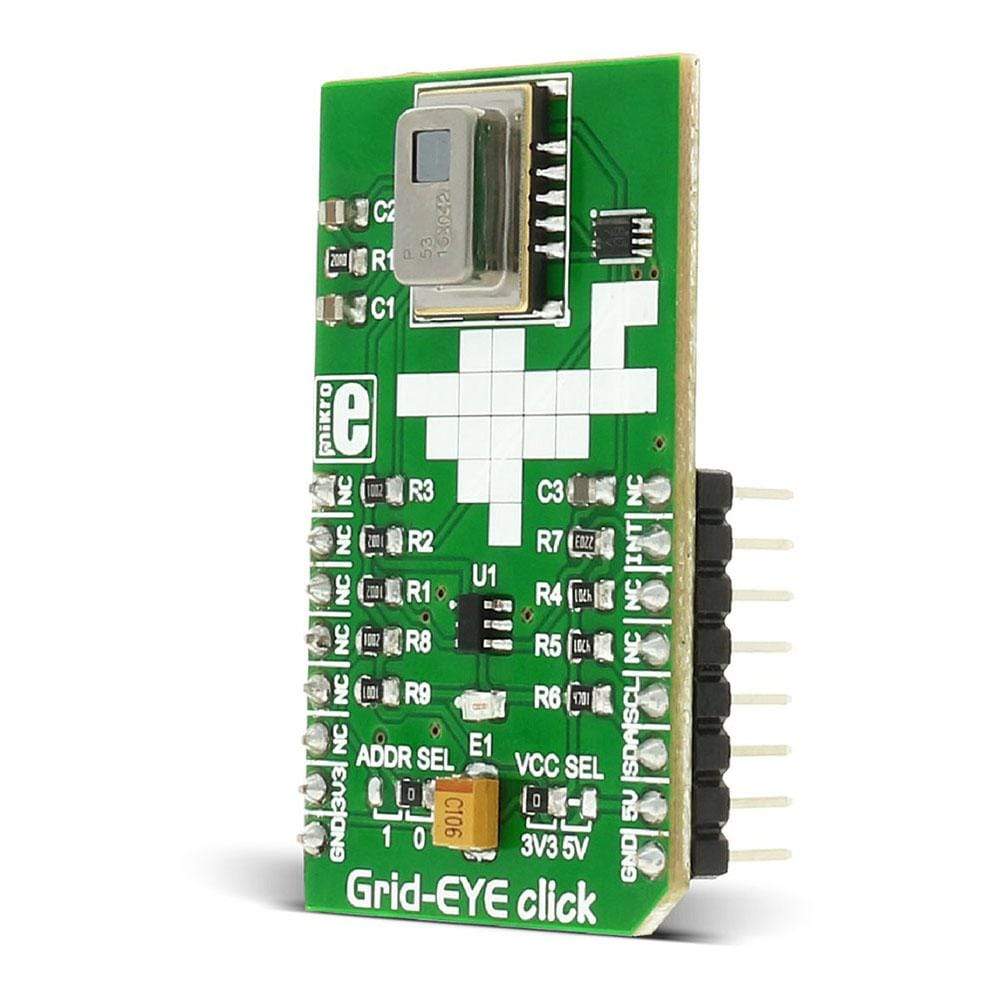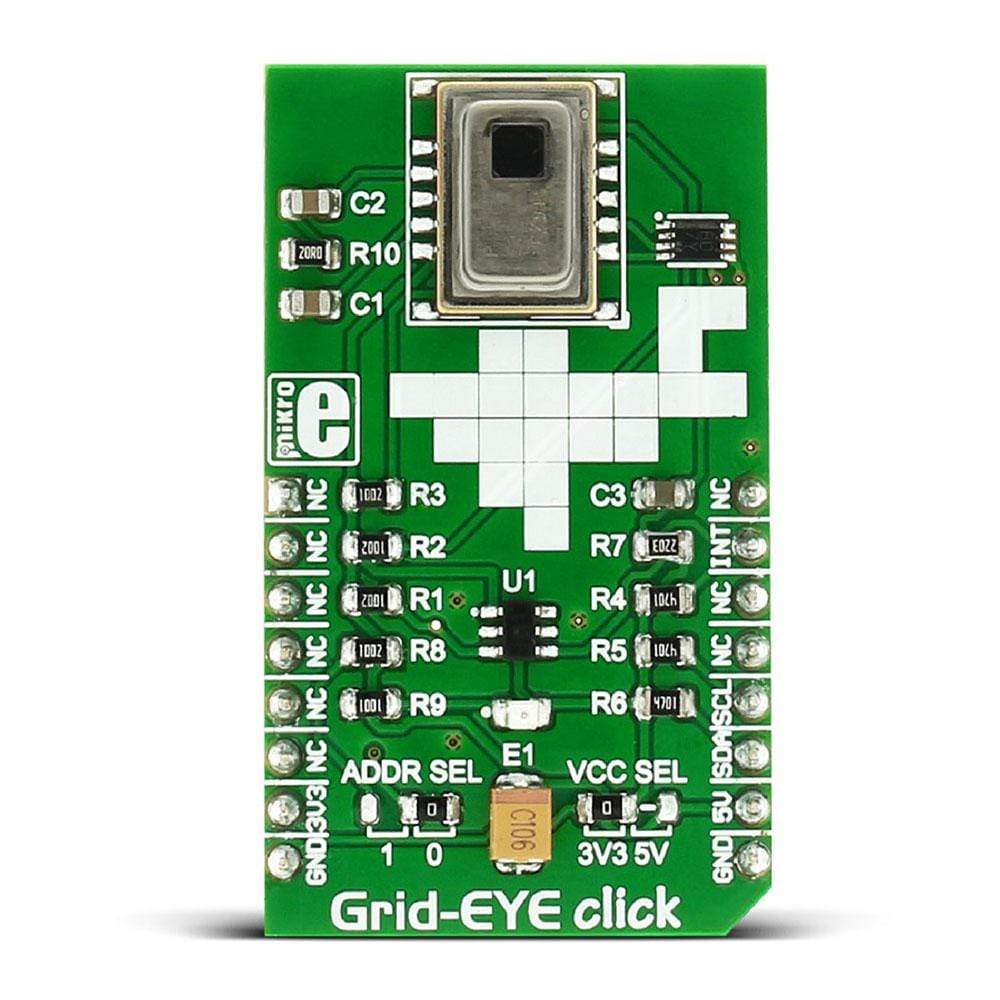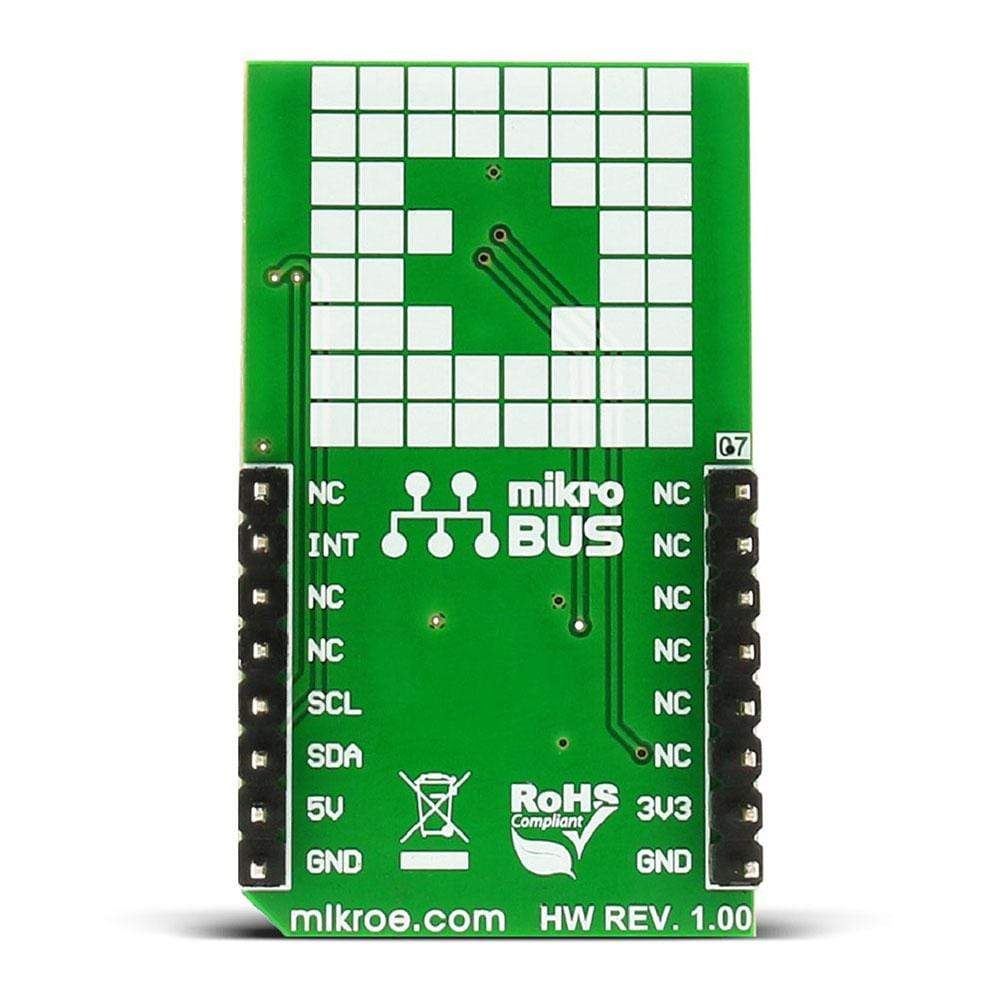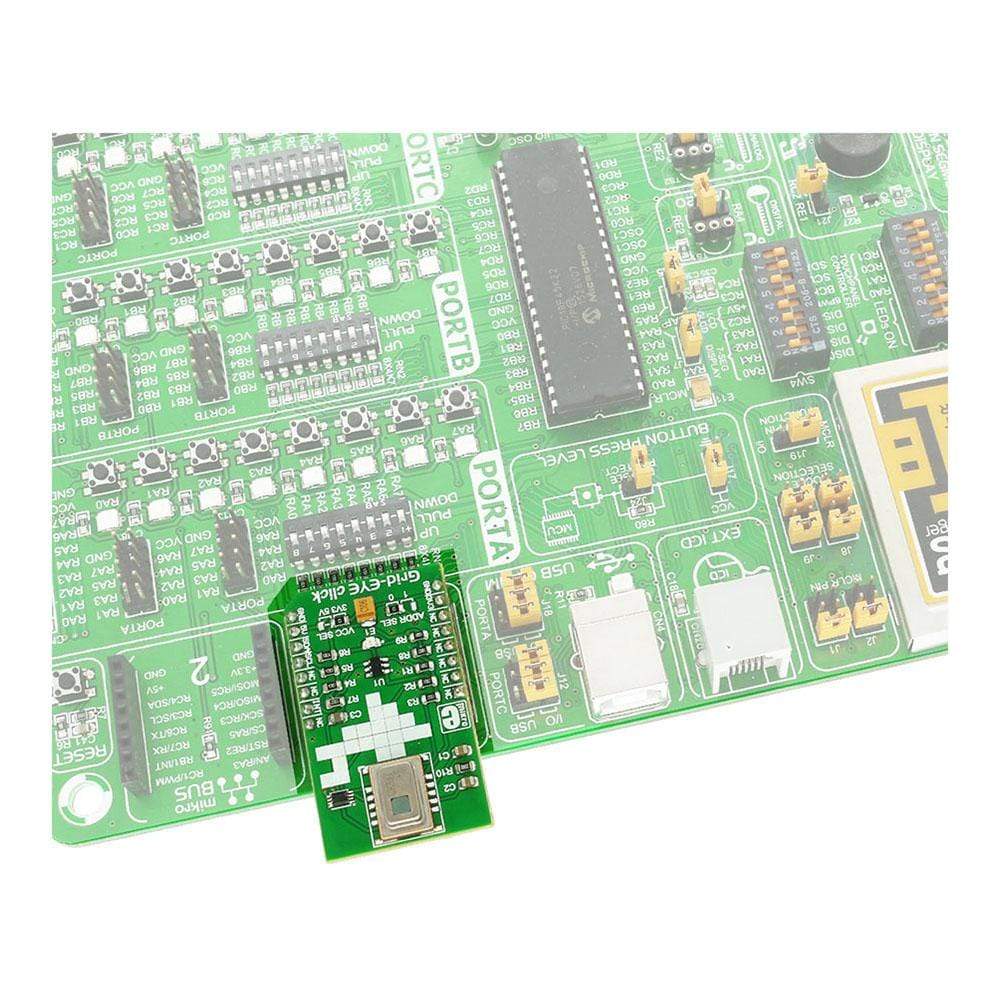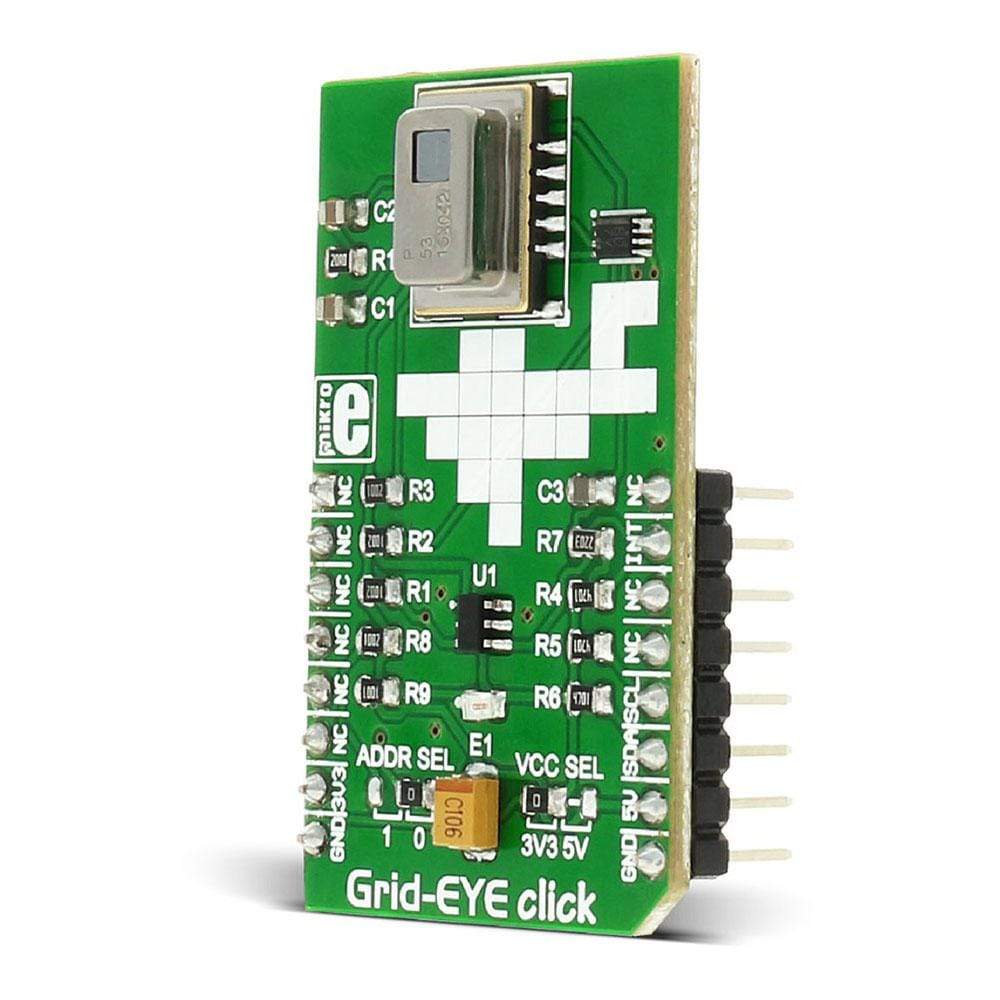
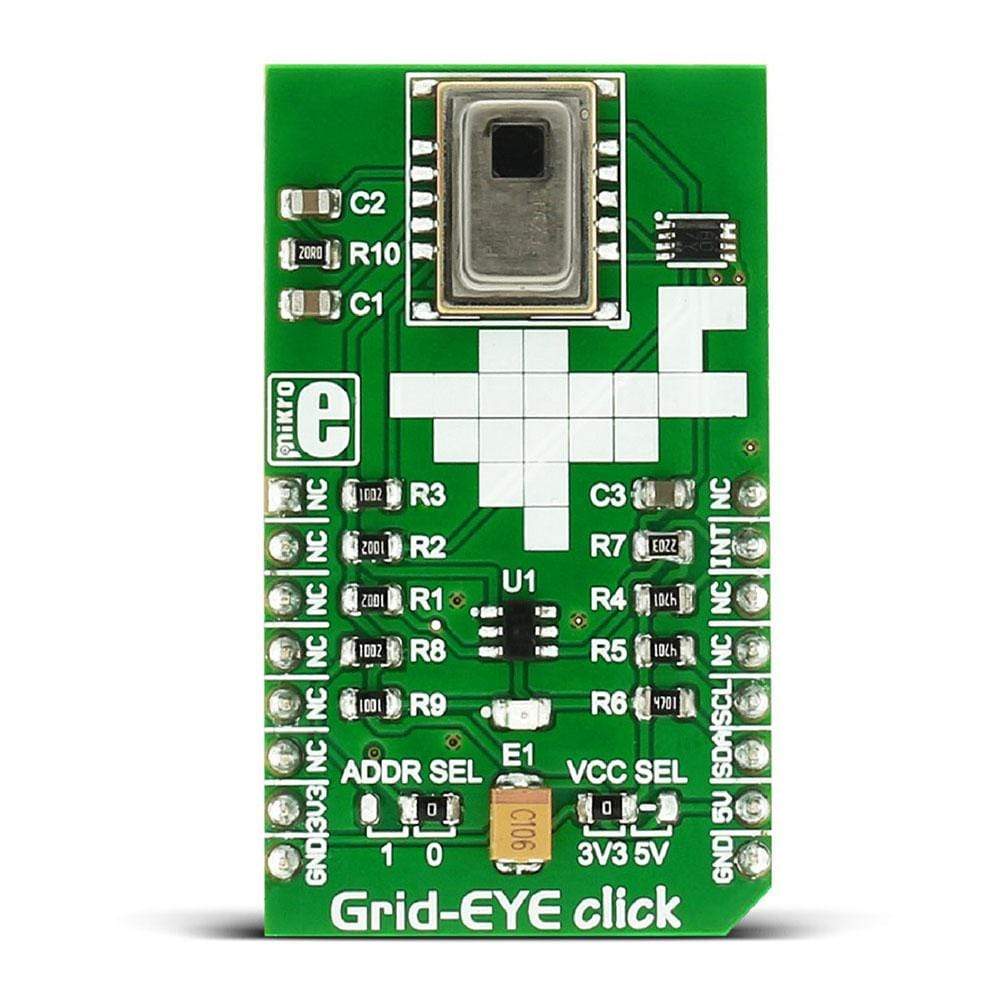
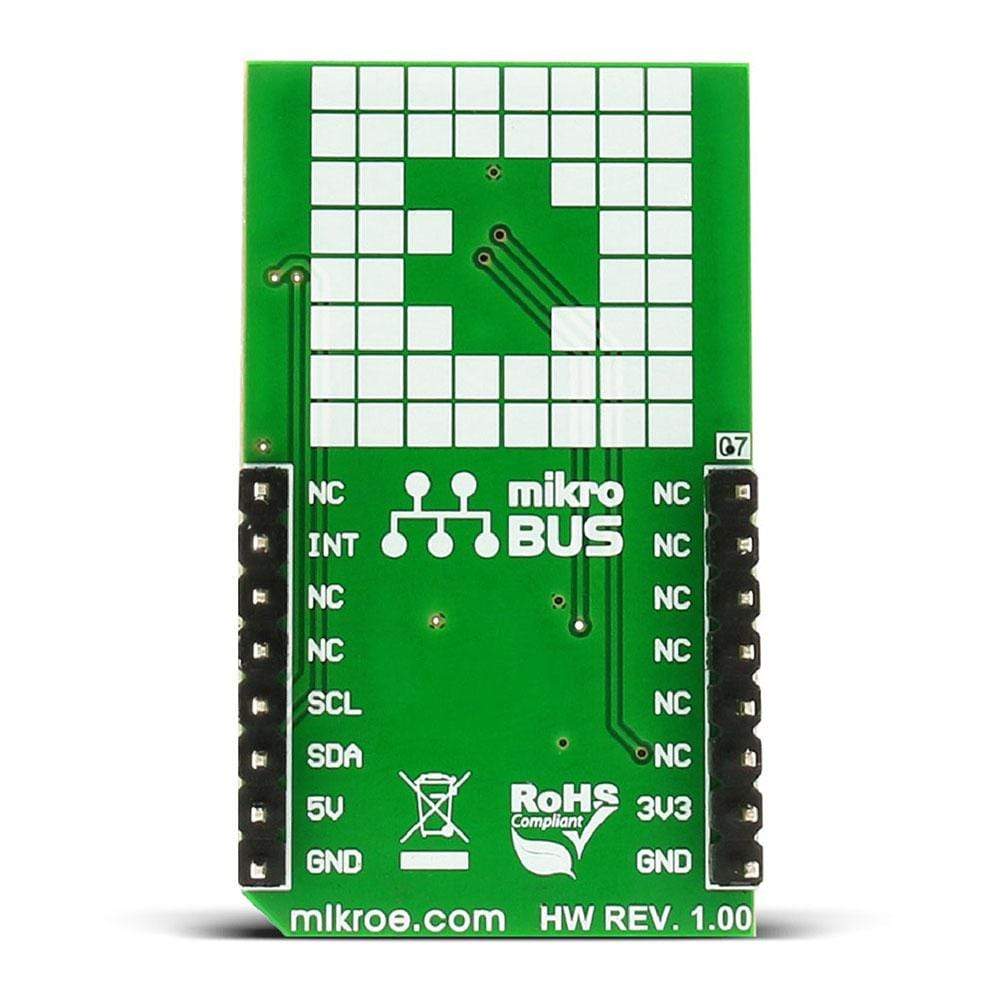
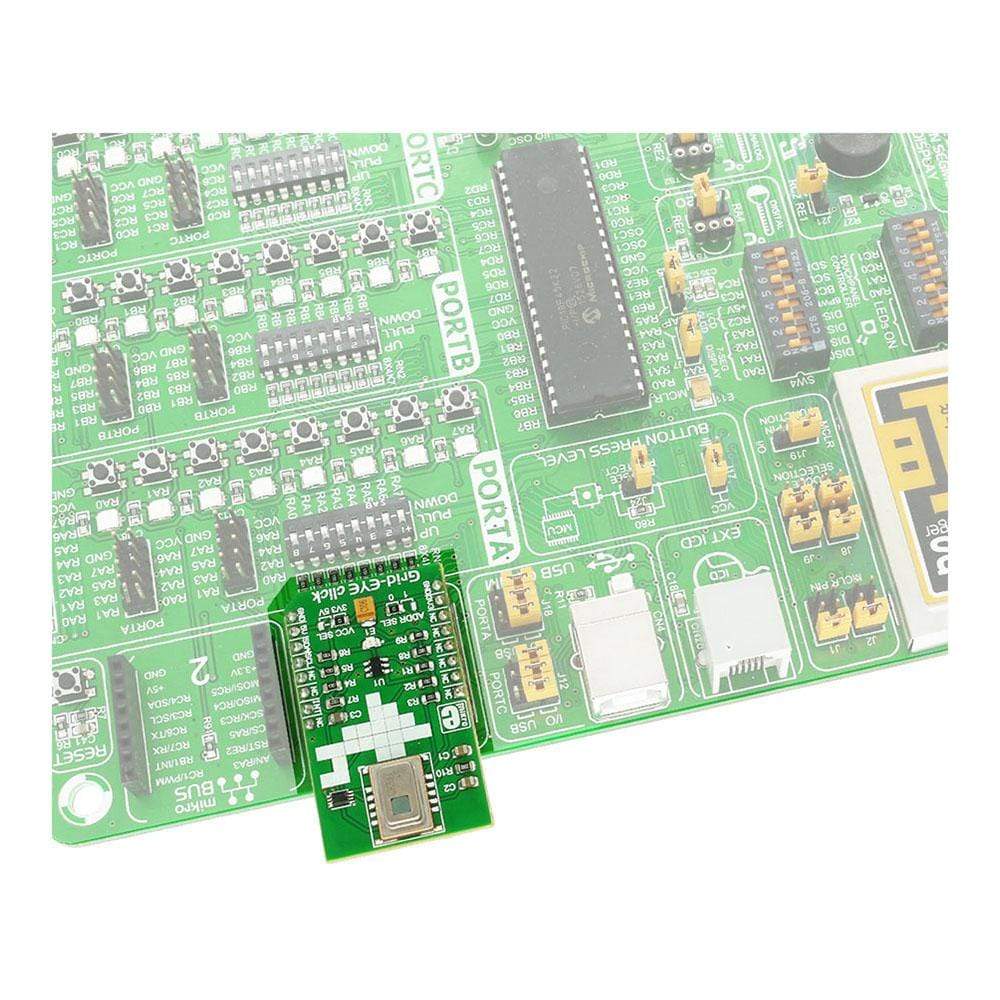
Overview
The Grid-EYE Click Board™ is an 8x8 thermal array sensor-detector that carries the AMG8853 infrared array sensor from Panasonic.
The Click Board™ is designed to run on either a 3.3V or 5V power supply. It communicates with the target MCU over the I2C interface.
Use the Grid-EYE Click Board™ to detect absolute surface temperature without any contact. Or use it to detect the movement of people and objects.
Downloads
Das Grid-EYE Click Board™ ist ein 8x8-Wärmebild-Array-Sensor-Detektor, der den Infrarot-Array-Sensor AMG8853 von Panasonic trägt.
Das Click Board™ ist für den Betrieb mit einer 3,3-V- oder 5-V-Stromversorgung ausgelegt. Es kommuniziert mit der Ziel-MCU über die I2C-Schnittstelle.
Mit dem Grid-EYE Click Board™ können Sie die absolute Oberflächentemperatur berührungslos ermitteln. Oder nutzen Sie es, um die Bewegung von Personen und Objekten zu erkennen.
| General Information | |
|---|---|
Part Number (SKU) |
MIKROE-2539
|
Manufacturer |
|
| Physical and Mechanical | |
Weight |
0.02 kg
|
| Other | |
Country of Origin |
|
HS Code Customs Tariff code
|
|
EAN |
8606018710041
|
Warranty |
|
Frequently Asked Questions
Have a Question?
Be the first to ask a question about this.

